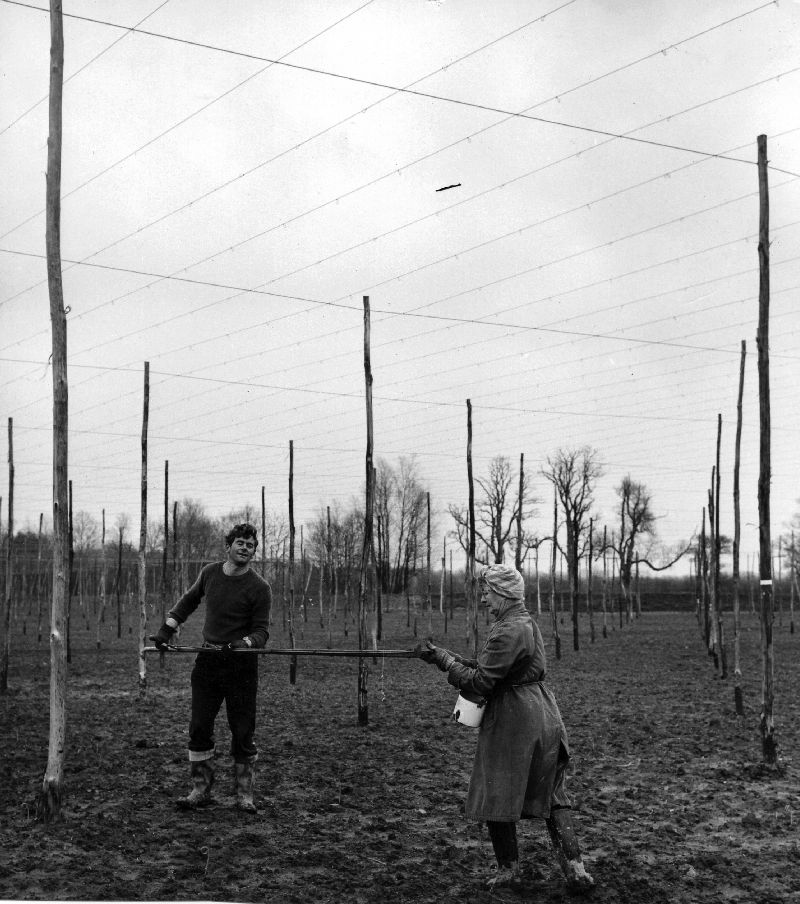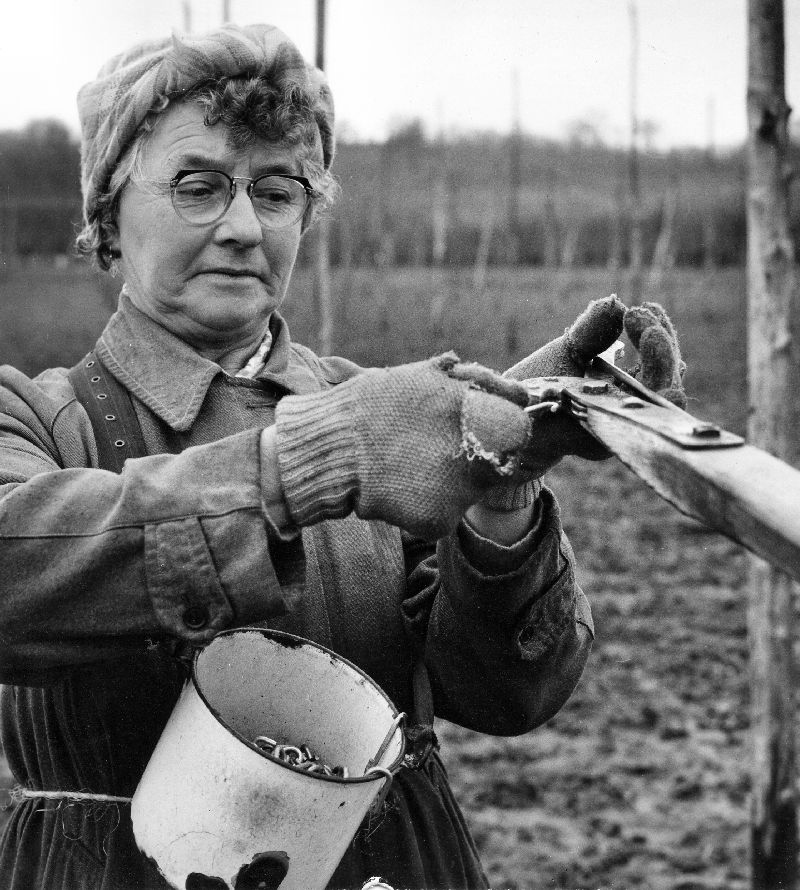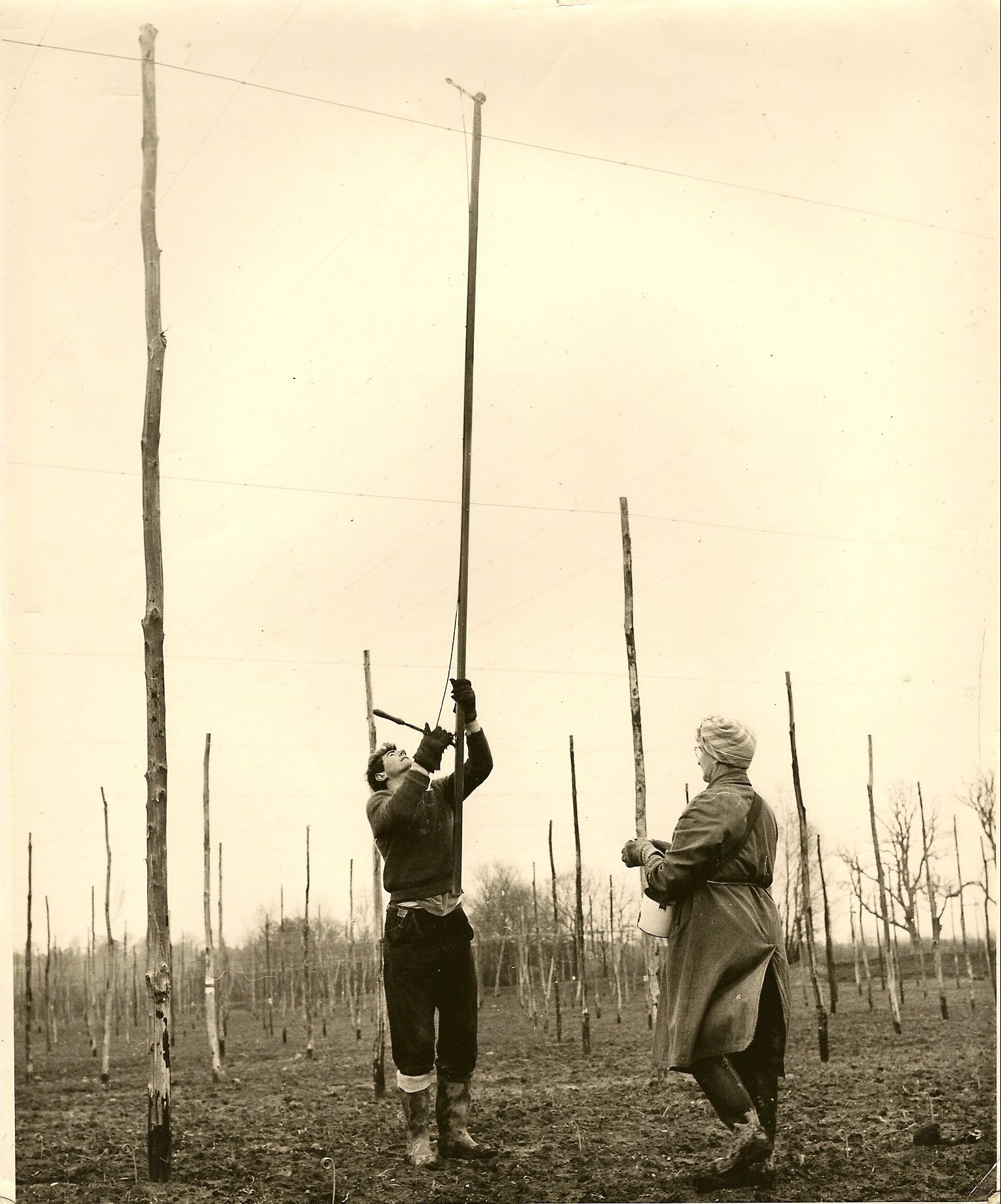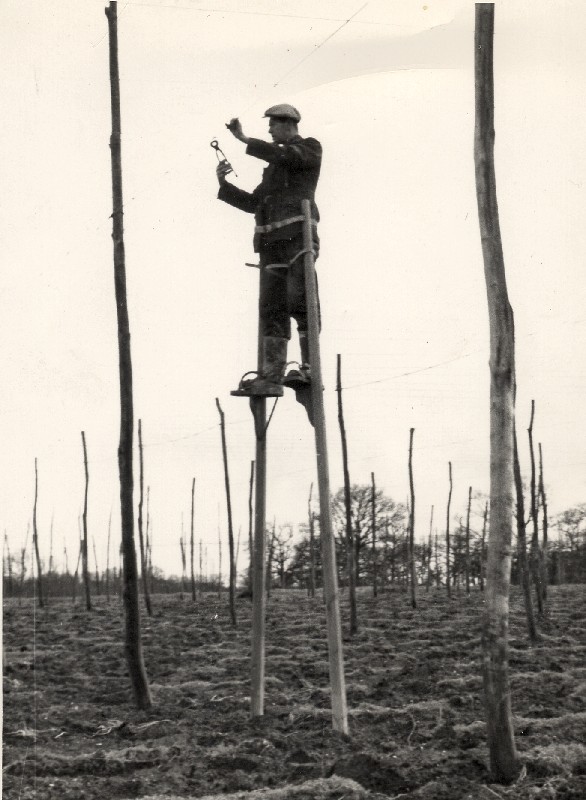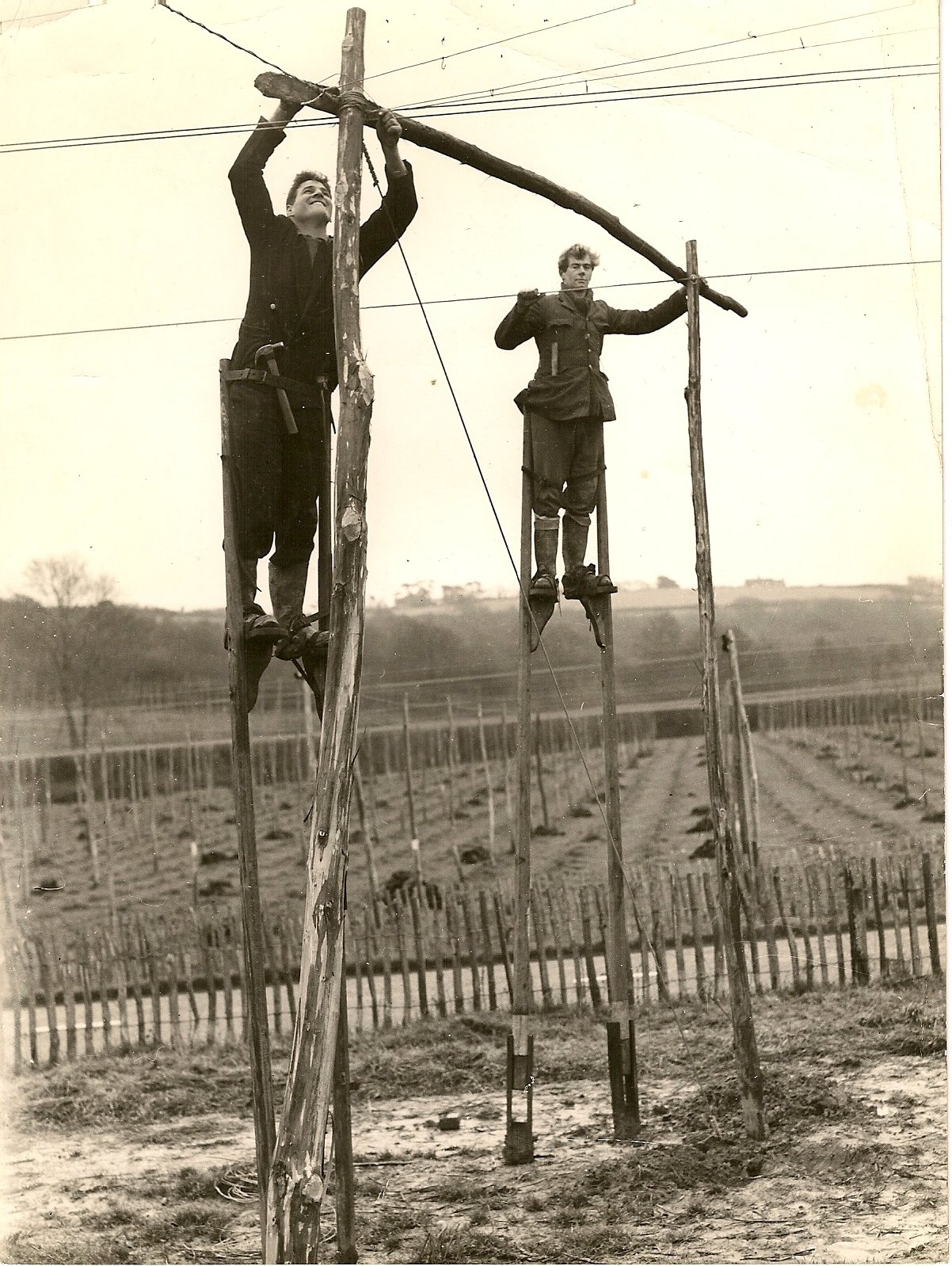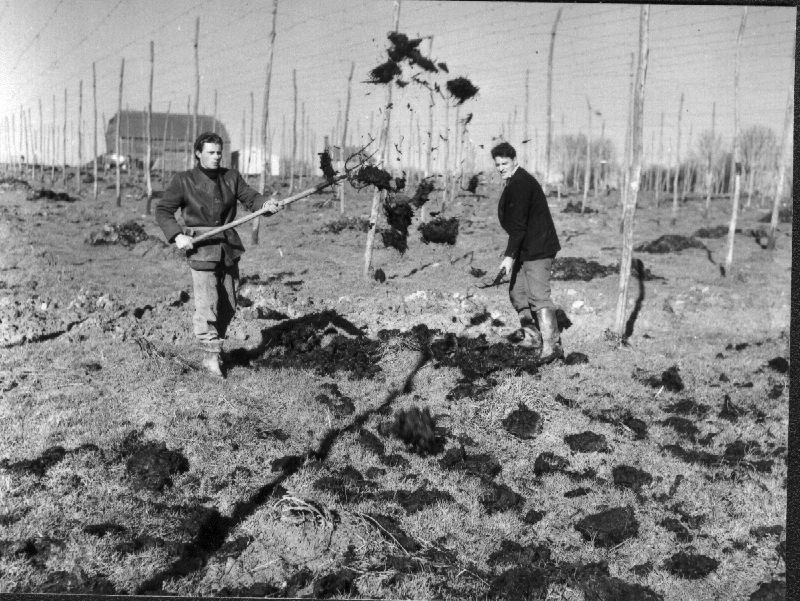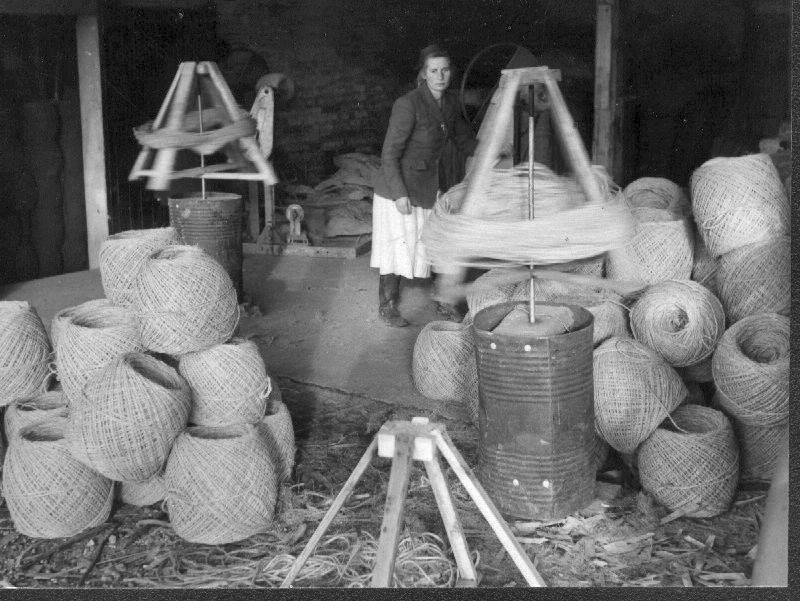
The Hop Picking Year
Winter Preparation
The New Year sees the start of the Hop Picking Year. Last year's harvest has been picked, dried and delivered to the brewery. The hops are dormant for the winter.
The winter months are time to prepare for the next hop picking year. One of the first jobs is to cultivate the hop gardens when the weather permits. The first photo shows Bob Jones ploughing. The second, someone (can you identify their back?) cultivating. As you can see from the pictures, there is only a narrow aisle to negotiate and care needs to be taken to avoid the hop plants. The plough is a set width and throws the earth inwards and away from the hop hills. If you look carefully to the left of the plough you can see a hill peg and to the right, the remnants of last years bines.


Once the Hop garden has been ploughed, the hop plants need to be prepared for the coming year. The first job is tp expose the hop plant by removing the earth around it with a hoe or similar implement. This photo shows Johnny Hook hoeing the earth away from a hop plant.
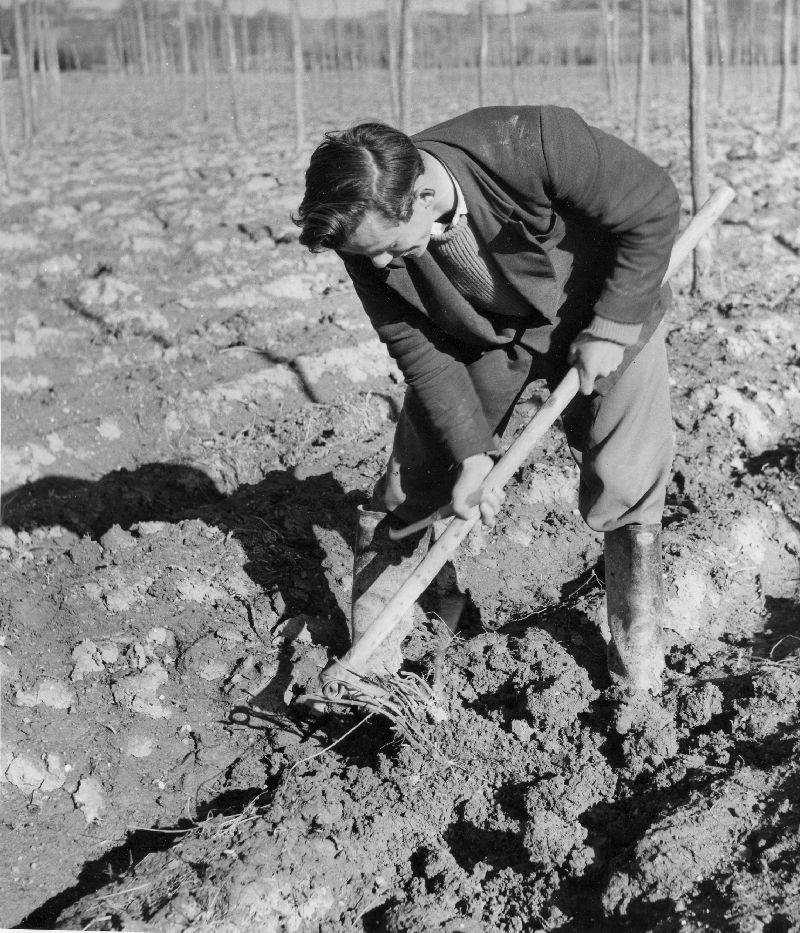
Once the plant has been exposed the any old growth that could cause disease to the hop plant is cut away. This was known in Bodiam as "hop dressing". Various instruments were used for this job depending on the dressers preference, knives of all shapes and sizes and even piano wire was known to be used. This photo shows a hop plant being dressed with a knife.
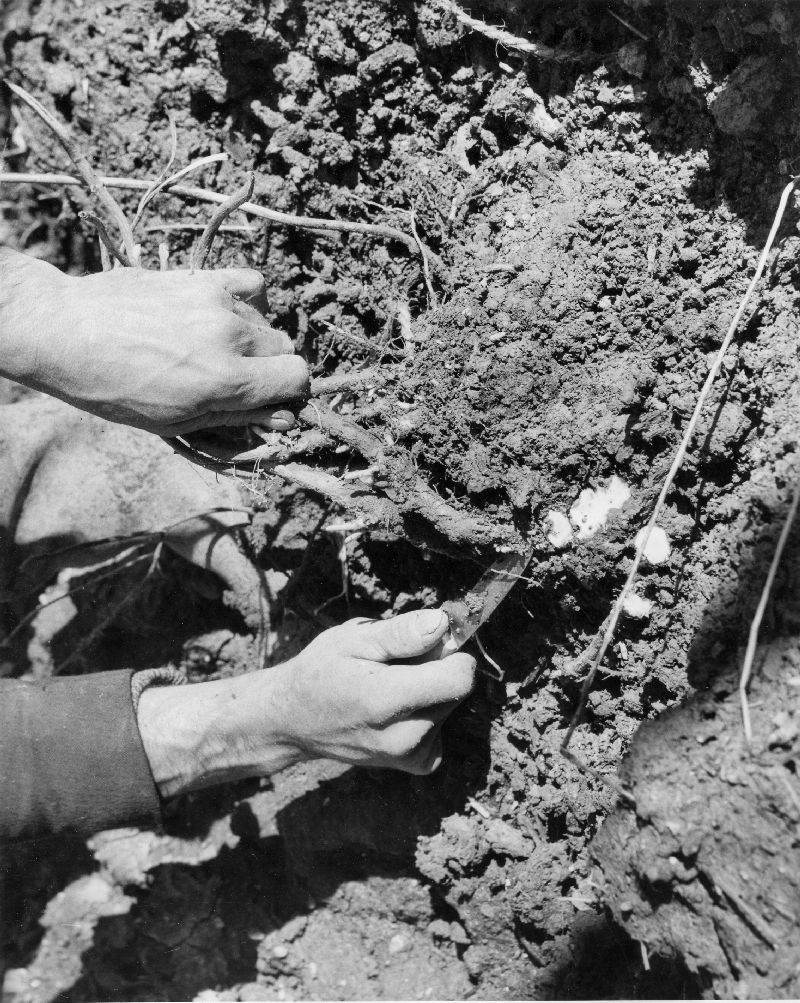
Other winter jobs involve maintaining the wire work
which supports the hops. The hopstrings are attached to hooks on
the wire work. Over the years these hooks become weak and during
hop picking, some of them get pulled off the wire work as the hop bines
are pulled down. Before stringing can take place, these hooks
need to be replaced. The following photos show first, John
Ades holding the hooking pole and Nell Godden putting the hooks onto
the pole. The second photo shows Nell putting the "s" shaped
hooks on the pole. One end of the "s" was clamped onto the wire
work leaving the other end as a hook for the hop string to be looped
round. The hooks are visible on the wire work in the first
picture.
